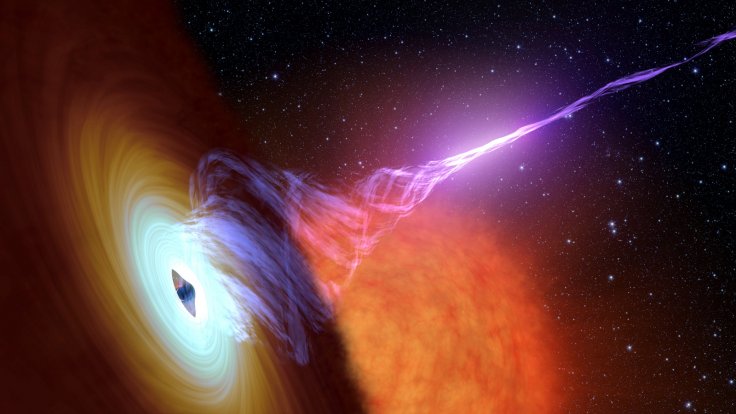
Australian National University astronomers have discovered a supermassive black hole ever found in the universe. Researchers who took part in the research have revealed that this black hole is growing so fast, that it can eat up stars equivalent to the mass of our sun in just two days.
The black hole is approximately 12 billion light years away from earth. The vast distance in which the black hole is placed indicates that humans are actually seeing it in its looks before 12 billion years, not too long after the Big Bang.
It is due to the incredible brightness that the black hole became visible from earth. If this black hole was inside the same milky way along with earth, then it could have lit up the sky brighter than a full moon and its impact could have made all the stars in the skies look dimmer.
"The heat radiation from the matter falling into the black hole, which is the light we see, is a few thousand times brighter than our own Milky Way galaxy," told Christian Wolf, a team member at the Australian National University to CNN.
This black hole would also have wiped out all the life from the earth due to the X-rays, which will be beamed out from it. Scientists have named the black hole as "QSO SMSS J215728.21-360215.1" and it has the size of 20 billion suns. It is growing at a rate of 1 percent per one million years. According to astronomers, this black hole must have started out as the size of 5,000 suns, and in the course of time, it has increased its size like a massive cosmic entity. Usually, an average black hole is about the size of 50 suns.
"So, either black holes can grow faster than the speed limit, but we don't know how that works, and we have not seen it yet in action, or there is an unknown way to make 5,000 solar mass black holes very close in time to the Big Bang," Wolf said. "But who knows what happened in the dark early ages of the universe?" told Wolf and he revealed that more studies on this black hole will be helpful to understand the big bang.
"The hunt is on. We want to get a complete picture of the demographics of fast-growing supermassive black holes in the universe, and see just how big is the problem which we have to solve," added Wolf.
Earlier, the world famous cosmologist Stephen Hawking has shown a whole new black hole concept in 1974, known as "Black Hole Explosions?" The late scientist had claimed that any information or data that enter the black hole, would be lost, but an American physicist Leonard Susskind disagreed with this black hole theory and made it clear that Hawking is wrong. In 2004, Hawking too agreed that Susskind was right and in 2014, he admitted that information actually comes out of a black hole, but only in a distorted state.









